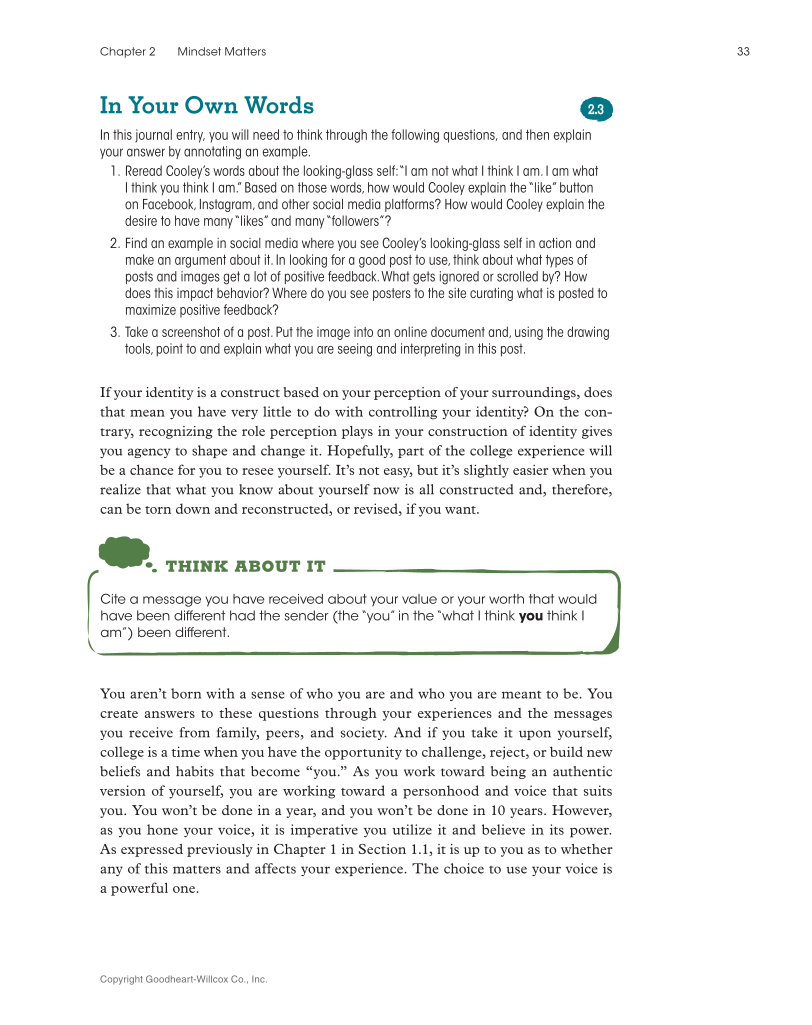33 Chapter 2 Mindset Matters Copyright Goodheart-Willcox Co., Inc. If your identity is a construct based on your perception of your surroundings, does that mean you have very little to do with controlling your identity? On the con- trary, recognizing the role perception plays in your construction of identity gives you agency to shape and change it. Hopefully, part of the college experience will be a chance for you to resee yourself. It’s not easy, but it’s slightly easier when you realize that what you know about yourself now is all constructed and, therefore, can be torn down and reconstructed, or revised, if you want. You aren’t born with a sense of who you are and who you are meant to be. You create answers to these questions through your experiences and the messages you receive from family, peers, and society. And if you take it upon yourself, college is a time when you have the opportunity to challenge, reject, or build new beliefs and habits that become “you.” As you work toward being an authentic version of yourself, you are working toward a personhood and voice that suits you. You won’t be done in a year, and you won’t be done in 10 years. However, as you hone your voice, it is imperative you utilize it and believe in its power. As expressed previously in Chapter 1 in Section 1.1, it is up to you as to whether any of this matters and affects your experience. The choice to use your voice is a powerful one. THINK ABOUT IT Cite a message you have received about your value or your worth that would have been different had the sender (the “you” in the “what I think you think I am”) been different. In Your Own Words In this journal entry, you will need to think through the following questions, and then explain your answer by annotating an example. 1. Reread Cooley’s words about the looking-glass self: “I am not what I think I am. I am what I think you think I am.” Based on those words, how would Cooley explain the “like” button on Facebook, Instagram, and other social media platforms? How would Cooley explain the desire to have many “likes” and many “followers”? 2. Find an example in social media where you see Cooley’s looking-glass self in action and make an argument about it. In looking for a good post to use, think about what types of posts and images get a lot of positive feedback. What gets ignored or scrolled by? How does this impact behavior? Where do you see posters to the site curating what is posted to maximize positive feedback? 3. Take a screenshot of a post. Put the image into an online document and, using the drawing tools, point to and explain what you are seeing and interpreting in this post. 2.3
